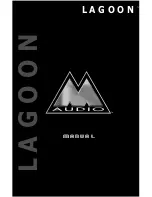
Peritek
1-6
General Information
Green, and Blue signals from the RAMDAC are connected to a monitor
such as the Peritek CVM-19/E-7.
On the VCD-V (only) the display memory data is also directed to a
proprietary Digital LookUp Table (DLUT) which provides a
programmable 8-bit wide map. Depending on how the VCD-V is
configured, 1, 4, or 8 bit monochrome or 8-bit color (3 bits red, 3 bits
green, and 2 bits blue) can be supported.
The VCL-V, available in May
1995, will support expanded 12 to 24 bit color map options.
The eight
bit pixel is used as an index into the lookup table, giving 256 colors out of
a palette of 16.7 Million. A two bit cursor with a 64 x 64 x 2 bit map
function is also included. Additional color map entries are provided for the
overlay screen and cursors. Contact Peritek for information on what panels
are supported.
VMEbus Interface
The VMEbus host interface accesses Peritek graphics board memory and
on-board devices through four control registers and a 1 KB line buffer
which are located in VMEbus A16 space. The line buffer can also appear
in A24 space.
The CSR contains device interrupt enables, line buffer response enable,
and 34020 hardware reset. The LAR is a 16 bit register which maps a
portion of the address space of the graphics board into a 1 KB line buffer.
Two additional registers include programmable line buffer address,
interrupt vector address and programmable extended address (A32)
decoder. Access to the board through the A16 space provides a "lowest
common denominator" access mode which allows the board to be
compatible with any host CPU. In an A16 VMEbus system it is necessary
to "window" into on-board memory because it is so large (maximum
memory capacity on the board is more than 48 MB!) The 1 KB window is
actually an efficient way of doing this.
The graphics boards also have an 64 MB window in A32 VMEbus address
space which allows direct access to all on-board memory.
VMEbus D32 block transfers are supported for A16/A24 and A32 address
spaces, which allows up to 256 bytes to be transferred at high speed over
the VMEbus. Another performance feature for the boards is a hardware
byte swapper. When enabled, four 1KB buffers are mapped to the board
which provide unswapped, byte, word, and long swaps, respectively.
The board has a VMEbus interrupt controller which supports a vectored
interrupt from the 34020.
Summary of Contents for VCD-V
Page 2: ...Peritek ...
Page 3: ...Peritek ...
Page 5: ...Peritek ...
Page 6: ...Peritek ...
Page 10: ...Peritek ...
Page 42: ...Peritek Installing Your Peritek Graphics Board 2 11 Figure 2 3 Jumper Locations for the VCD V ...
Page 94: ...Peritek Theory of Operation 4 15 Figure 4 1 VCD V Block Diagram ...
Page 95: ...Peritek 4 16 Theory of Operation Figure 4 2 VCU V Block Diagram ...
Page 96: ...Peritek Theory of Operation 4 17 Figure 4 3 VCT V Block Diagram ...
















































